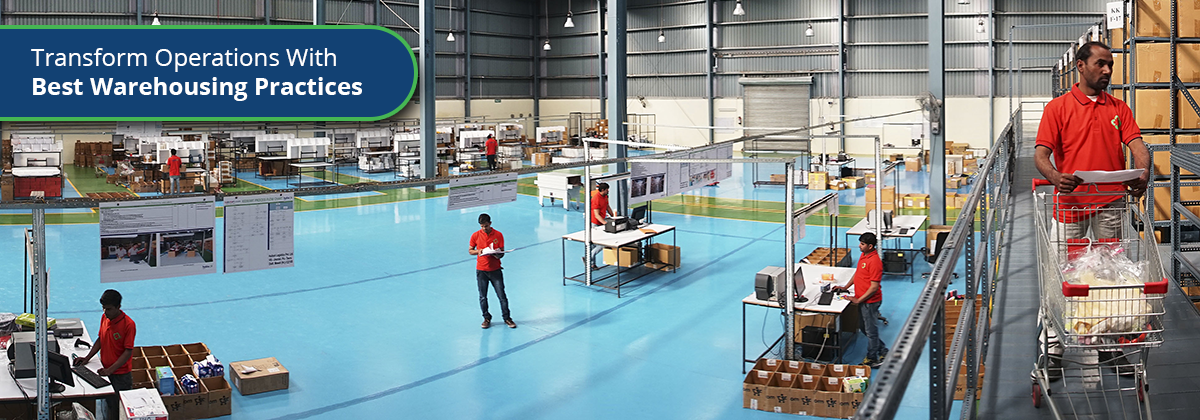Transform Operations With Best Warehousing Practices
Warehouse forms a very critical link in the supply chain of any organization and plays a pivotal role in matching demand with supply. Efficient warehousing practices help in achieving maximum order fulfillment at the lowest possible cost. Thus, using best warehousing practices are mandatory to transform the warehousing operations which can result in a reduction of cycle time, better inventory management, improved safety standards, lower costs etc. Most importantly, it improves customer service, increases order fulfillment rates and eventually adds more value to the overall supply chain.
Warehouse operations are widely divided into two parts – Storage and Material handling. The best warehousing practices, thus include storage norms and material handling norms to be followed which will transform the warehousing operations.
Storage Norms:
1. Accessibility and Ease of Handling:
It is very important to keep the regularly required units at a more convenient location and ensuring that the items are easy to handle. It’s one of the best warehouse practices that heavier goods are stored at the bottom of the shelf & lighter loads above the heavier goods. This makes it easier as well as reduces risks of accidents.
2. Segregation:
Warehousing teams find it easier to find different products within the warehouse if they are stacked based on alike characteristics. For example, storing food items separately from non-food items adds to best warehousing practices. While flammable or hazardous goods should always be stored separately with proper marking and away from other stocks.
3. Cubic Space Utilization:
Space utilization is one of the concerns to be addressed in almost all the warehouses. Experts recommend following yet another warehousing practice of effective cubic space utilization i.e. utilization of length, width and height of warehouse. Top it up with reduced wastage of storage space and it’ll lead to improvement and increase in warehouse storage capacity.
4. Sustainable Practices:
It’s advisable to utilize sustainable warehousing practices which save energy costs in the long run –
- Using solar panel for generating electricity & heating
- Transparent roof shed
- Reusing boxes received in inbound
Handling Norms:
1. Picking Methodology:
The best warehousing practice is to have the most frequently picked items closest to the shipping areas to minimize picking time. By constantly reviewing the sales data it can be ensured that the items are stored close to the shipping area are still the most frequently picked. Usage of IT solutions like WMS can be configured to keep a constant eye on units which are picked on a regular basis.
2. Put-Away Practices:
Put-away is the process of moving material from the dock and transporting it to a warehouse. The best warehousing practice is to put away product on the same day when it was received in the warehouse because not doing so affects space, causes congestion and makes the product more susceptible to damage.
3. Security & Safety Protocols:
While designing warehouses, safety and security of goods and warehousing staff must be treated as a mandatory protocol. Experts state that various types of equipment are required to ensure smooth execution of warehouse processes. All such equipment should be properly stored when not in use and must go through regular maintenance checks. Holisol recommends training warehouse staff for the correct usage of equipment. Wherever necessary, they should be equipped with personal safety equipment.
With the experience of having designed and set-up many world-class warehouses, experts at Holisol state that efficient warehouse operations should be designed through adherence to a series of best warehousing practices without leaving anything to chance. Proper segregation of goods, safety stocking and ease in handling of goods will result in better storage in warehouses while handling norms like efficient picking process and put away practices will increase the daily efficiency of the warehousing staff. For more information email us at communication@holisollogistics.com

